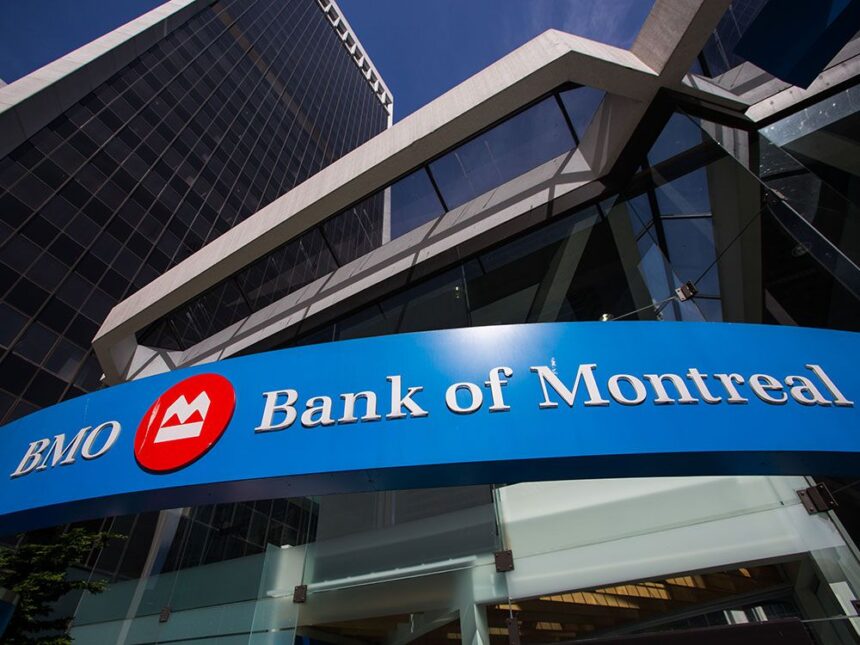The rhythmic hum of trading floors quieted momentarily this morning as Bank of Montreal unveiled its third-quarter results, surprising market watchers with performance that exceeded expectations across multiple metrics. Canada’s fourth-largest lender reported adjusted earnings of $2.84 per share, comfortably surpassing analysts’ projections of $2.74, while simultaneously reducing its provisions for credit losses—a move that signals growing confidence in the economic landscape.
BMO’s quarterly net income reached $1.98 billion, marking a 3% increase from the same period last year. This performance comes at a pivotal moment as Canadian banks navigate through economic headwinds that have pressured lending operations and raised concerns about loan quality.
“We’re seeing strong underlying momentum across our diversified businesses,” said Darryl White, BMO’s Chief Executive Officer during this morning’s earnings call. “Our focus on operational efficiency and disciplined capital allocation is delivering results while positioning us well for changing market conditions.”
Perhaps most telling was BMO’s decision to reduce its provisions for credit losses to $259 million, down significantly from $492 million in the previous quarter. This 47% decrease reflects the bank’s improving outlook on loan repayments and reduced concerns about widespread defaults—a sentiment not universally shared across the financial sector.
The bank’s Canadian personal and commercial banking division emerged as a standout performer, with net income rising 8% year-over-year to $921 million. This growth comes despite persistent challenges in the mortgage market, where higher interest rates continue to weigh on housing activity.
BMO’s U.S. segment, which expanded substantially following the acquisition of California-based Bank of the West last year, reported modest growth with net income of $722 million. The integration costs of this major acquisition have largely been absorbed, allowing the cross-border benefits to materialize more clearly in the quarterly results.
Efficiency improvements were evident in BMO’s improved efficiency ratio, which dropped to 58.3% from 60.2% in the previous quarter. This metric, representing non-interest expenses as a percentage of revenue, indicates the bank is extracting more value from its operational spending—a key focus for financial institutions in the current environment.
Capital markets performance showed resilience with investment banking fees increasing 12% year-over-year, despite uncertain market conditions. Trading revenues, however, showed more modest growth at 3%, reflecting the challenges of navigating volatile global markets.
The bank maintained its quarterly dividend at $1.51 per share, consistent with its previous announcement, while its Common Equity Tier 1 ratio—a key measure of financial strength—stood at 13.2%, well above regulatory requirements.
Amidst these positive signals, challenges remain. Net interest margin, the difference between what banks earn on loans and pay on deposits, contracted slightly to 2.68% from 2.71% in the previous quarter, highlighting ongoing pressure from the competitive rate environment.
As central banks across North America contemplate potential interest rate cuts, BMO executives expressed cautious optimism about the impact on lending activity while acknowledging the complex balance between encouraging borrowing and maintaining profitability.
“We’re positioning our balance sheet to perform well across different rate scenarios,” noted Tayfun Tuzun, BMO’s Chief Financial Officer. “Our diversified business model gives us flexibility to adapt as monetary policy evolves.”
With these results, BMO joins a growing chorus of Canadian financial institutions signaling that the worst of credit concerns may be receding. As economic indicators provide mixed signals, the question remains whether this newfound confidence reflects a genuine turning point or simply a temporary reprieve in a challenging cycle.
For investors watching the Canadian banking sector, BMO’s performance offers a compelling data point suggesting that well-managed financial institutions may be finding their footing even as economic uncertainties persist.










